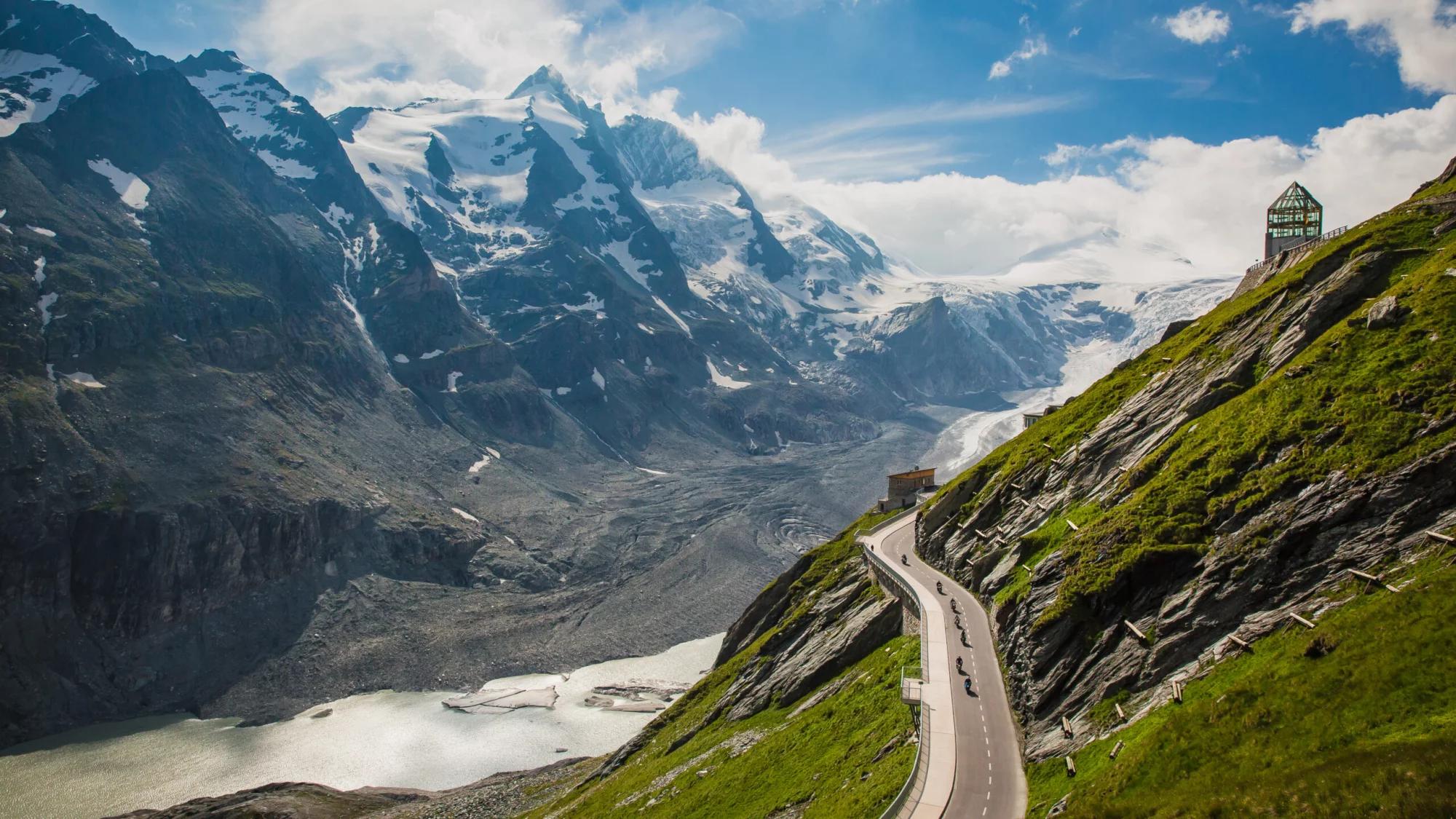13.6 km and 110 m of elevation gain / 1200 m of elevation loss












Alpe-Adria-Trail: Grossglockner to Mallnitz
6 days / 5 nights
|
Starting point
Kaiser-Franz-Josefs-Höhe
Finish point
Mallnitz
Season
From June to September
Technical level
2/5
Fitness level
4/5
Tour type
Inn-to-Inn
Starting point
Kaiser-Franz-Josefs-Höhe
Finish point
Mallnitz
Season
From June to September
Technical level
2/5
Fitness level
4/5
Tour type
Inn-to-Inn
Highlights
- Traverse past Austria's highest peaks like Grossglockner, and witness the majestic beauty of the Pasterze Glacier
- Discover the rich tapestry of history and legend in Heiligenblut of gold miners and ancient relics
- Experience the harmony of nature and culture at the traditional mountain farming landscapes of Apriach
- Embrace the serene spirituality of Austria's highest pilgrimage church at Marterle
- Marvel at the engineering and historical allure of ancient gold mining trails
- Witness the awe-inspiring Jungfernsprung waterfall and the landscapes of the Hohe Tauern National Park
Itinerary of the trip
FREE ITINERARY
Get Your Travel Itinerary
Loved the itinerary? Enter your email below, and we'll send a copy straight to your inbox.
What’s included in the price?
Self-guided
NOT INCLUDED
OPTIONAL EXTRAS
What to bring to the tour
- Hiking shoes/boots
- 25 to 45-liter backpack
- Base layer
- Sports T-shirts
- Hiking shorts
- Hiking water-repellent pants
- Waterproof jacket
- Midlayer
- Sports socks and underwear
- Leisurewear for evenings
- Down jacket
- Gloves
- Shade hat/cap
- Warm headwear
- Sunscreen
- Sunglasses
- Headlamp
- Hiking poles
- ID card or passport
- Snacks
- Cash
- Water bottles or hydration pack
- Sleeping liner
- Toiletries
- Toilet paper
- Small first aid kit
Head on a breathtaking journey through the heart of the Alps with our meticulously curated Alpe Adria Trail adventure, spanning the first six enchanting stages, and discover the soul-stirring beauty and profound history of the region.
From the shadow of the Grossglockner, Austria's towering sentinel, to the tranquil waters of Lake Sandersee, each step on this trail unveils natural wonders that leave you in awe.
Marvel at the mighty Gößnitz Waterfall and tread softly past the serene Briccius Chapel, where legends of healing and history whisper in the mountain air.
Journey through the heart of Hohe Tauern National Park, where the legacy of mountain farming and gold mining enriches the landscape. The trail leads you past ancient mills in Apriach, silent sentinels of a bygone era, and through Döllach, where the past lives in harmony with the present.
Ascend to Marterle, Austria's highest pilgrimage church, and feel the spiritual resonance that permeates this sacred ground. The trail offers a glimpse into the soul of a region defined by faith, beauty, and the relentless passage of time.
As you immerse yourself in the stunning vistas and rich history of the Alps, we ensure a hassle-free journey every step of the way.
Our comprehensive service includes booking your accommodations in the most charming and comfortable locations along the trail and providing a personalized digital guidebook with all the essential details about your tour.
We also deliver GPS navigation through a user-friendly phone app to guide you through each scenic path and ensure round-the-clock support during your hike.
We've taken care of all the logistics so you can fully engage with the beauty and spirit of the Alpe Adria Trail, creating memories that will last a lifetime.
Frequently Asked Questions
Ratings & Reviews

5.0 average rating

We had a lovely hike today with our guide Klemen. He personalized the tour on our needs and interests, so that we saw places we wouldn't without his experience. The hike was a little bit slippery after the rain from the last days and it went a lot upwards, but it was totally worth it! Thanks again :)


Our 3 day hike had to be rearranged 2/2 weather, so a one day hike was arranged for us. We appreciated the concern about weather and conditions. Our hike was with Matevz, who was a great guide. Very helpful and knowledgable. Would definitely recommend and will be back for a longer hike one day!
We had a lovely hike today with our guide Klemen. He personalized the tour on our needs and interests, so that we saw places we wouldn't without his experience. The hike was a little bit slippery after the rain from the last days and it went a lot upwards, but it was totally worth it! Thanks again :)


Our 3 day hike had to be rearranged 2/2 weather, so a one day hike was arranged for us. We appreciated the concern about weather and conditions. Our hike was with Matevz, who was a great guide. Very helpful and knowledgable. Would definitely recommend and will be back for a longer hike one day!
All available guidance options
Self-guided
Are you looking for a good adventure and limitless flexibility? Then you should try out a self-guided tour, perfect for independent explorers who want to set their own pace. Without the need to stick to a group schedule, you’re free to linger at scenic viewpoints while the logistics are taken care of in advance.
.svg)
VALUE YOUR TIME
With everything on your plate, let us handle the vacation planning, so your valuable time stays exactly where you need it.
.svg)
TRIED & TESTED ADVENTURES
Only the best hut to hut hikes of Austria, cherry-picked by our local team with an in-depth knowledge of the region.
TRUSTED BY MANY
We are a financially protected company operating since 2014, and with thousands of satisfied customers in the past, we still put you first.

SELF-GUIDED TRAVEL
Explore independently and with confidence while we keep everything running from behind the scenes.
.svg)
OUTDOOR SPECIALISTS
We are a team of outdoor specialists equipped with the knowledge and insight to bring you the best hiking experiences.








































